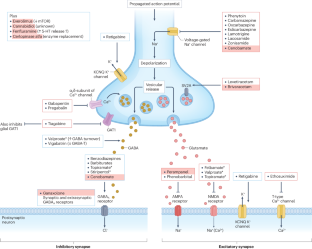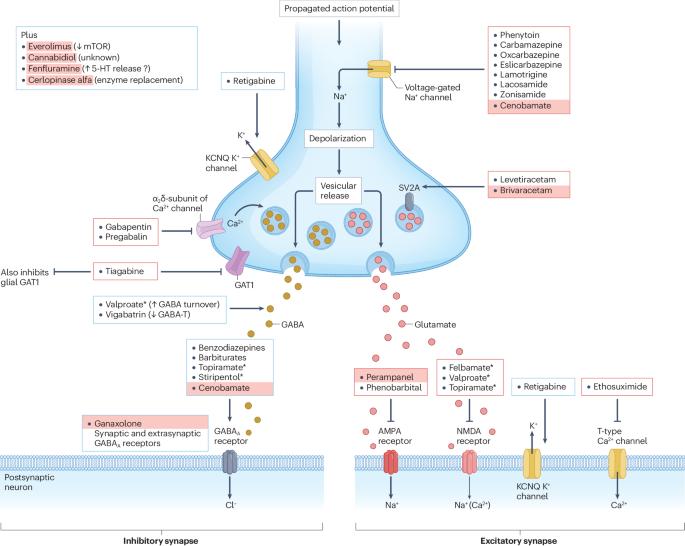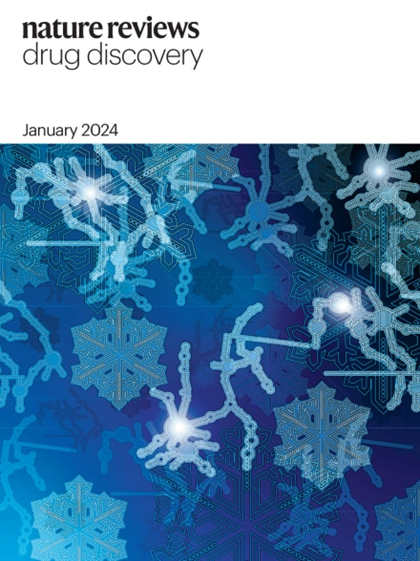New epilepsy therapies in development
IF 122.7
1区 医学
Q1 BIOTECHNOLOGY & APPLIED MICROBIOLOGY
引用次数: 0
Abstract
Epilepsy is a common brain disorder, characterized by spontaneous recurrent seizures, with associated neuropsychiatric and cognitive comorbidities and increased mortality. Although people at risk can often be identified, interventions to prevent the development of the disorder are not available. Moreover, in at least 30% of patients, epilepsy cannot be controlled by current antiseizure medications (ASMs). As a result of considerable progress in epilepsy genetics and the development of novel disease models, drug screening technologies and innovative therapeutic modalities over the past 10 years, more than 200 novel epilepsy therapies are currently in the preclinical or clinical pipeline, including many treatments that act by new mechanisms. Assisted by diagnostic and predictive biomarkers, the treatment of epilepsy is undergoing paradigm shifts from symptom-only ASMs to disease prevention, and from broad trial-and-error treatments for seizures in general to mechanism-based treatments for specific epilepsy syndromes. In this Review, we assess recent progress in ASM development and outline future directions for the development of new therapies for the treatment and prevention of epilepsy. Epilepsy is a common and debilitating brain disorder for which current antiseizure medications (ASMs) provide inadequate efficacy in around 30% of patients. In their Review, Pavel Klein and colleagues survey the diverse ASM pipeline, including new approaches to target specific epilepsy syndromes, and discuss strategies for disease prevention.


正在开发的癫痫新疗法。
癫痫是一种常见的脑部疾病,其特点是自发性反复发作,伴有神经精神和认知方面的并发症,死亡率较高。虽然高危人群往往可以被识别出来,但目前还没有预防该疾病发展的干预措施。此外,至少有 30% 的患者无法通过现有的抗癫痫药物(ASMs)控制癫痫。过去 10 年中,癫痫遗传学取得了长足的进步,新型疾病模型、药物筛选技术和创新治疗方法也得到了发展,目前已有 200 多种新型癫痫疗法进入临床前或临床研究阶段,其中包括许多通过新机制发挥作用的疗法。在诊断性和预测性生物标记物的辅助下,癫痫的治疗正经历着模式转变,从仅针对症状的 ASM 到疾病预防,从针对一般癫痫发作的广泛试错性治疗到针对特定癫痫综合征的基于机制的治疗。在本综述中,我们将评估 ASM 开发的最新进展,并概述治疗和预防癫痫新疗法的未来发展方向。
本文章由计算机程序翻译,如有差异,请以英文原文为准。
求助全文
约1分钟内获得全文
求助全文
来源期刊

Nature Reviews. Drug Discovery
医学-生物工程与应用微生物
CiteScore
137.40
自引率
0.30%
发文量
227
期刊介绍:
Nature Reviews Drug Discovery is a monthly journal aimed at everyone working in the drug discovery and development arena.
Each issue includes:
Highest-quality reviews and perspectives covering a broad scope.
News stories investigating the hottest topics in drug discovery.
Timely summaries of key primary research papers.
Concise updates on the latest advances in areas such as new drug approvals, patent law, and emerging industry trends and strategies.
 求助内容:
求助内容: 应助结果提醒方式:
应助结果提醒方式:


